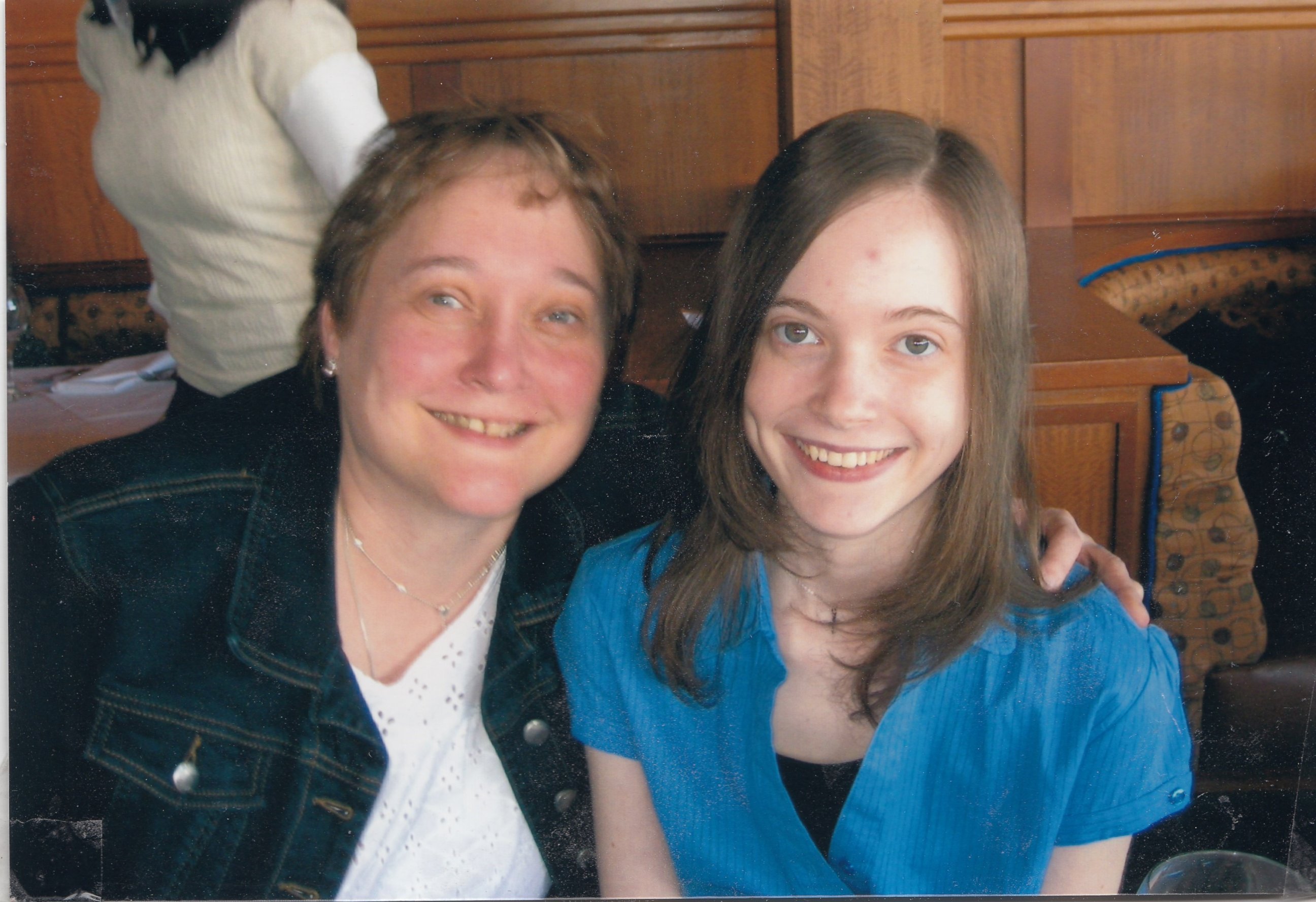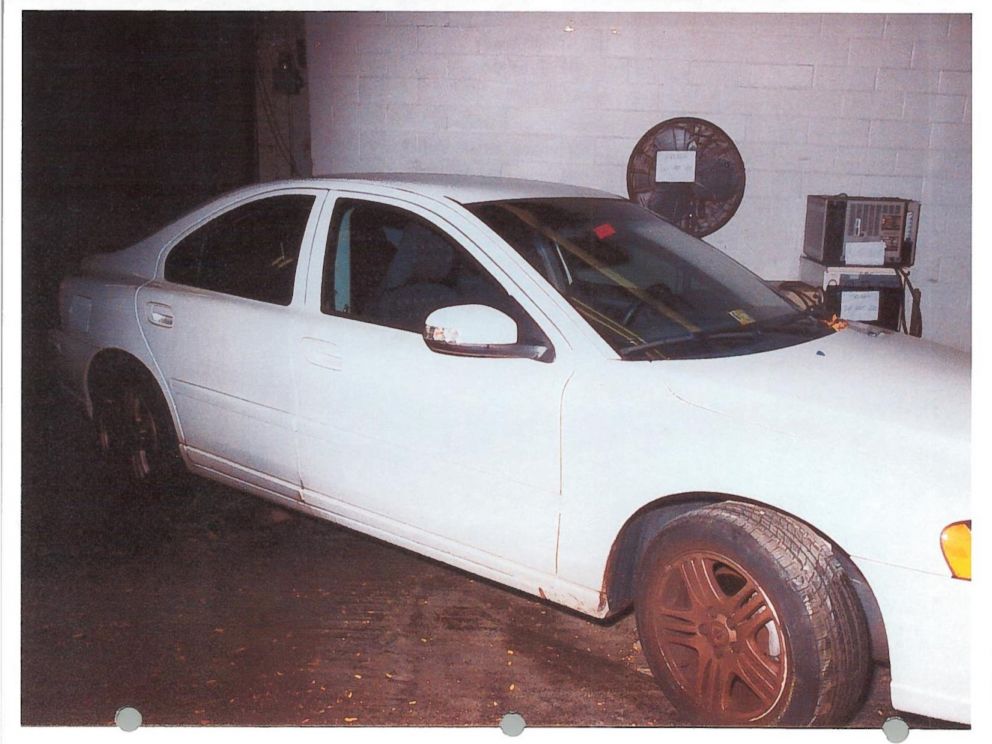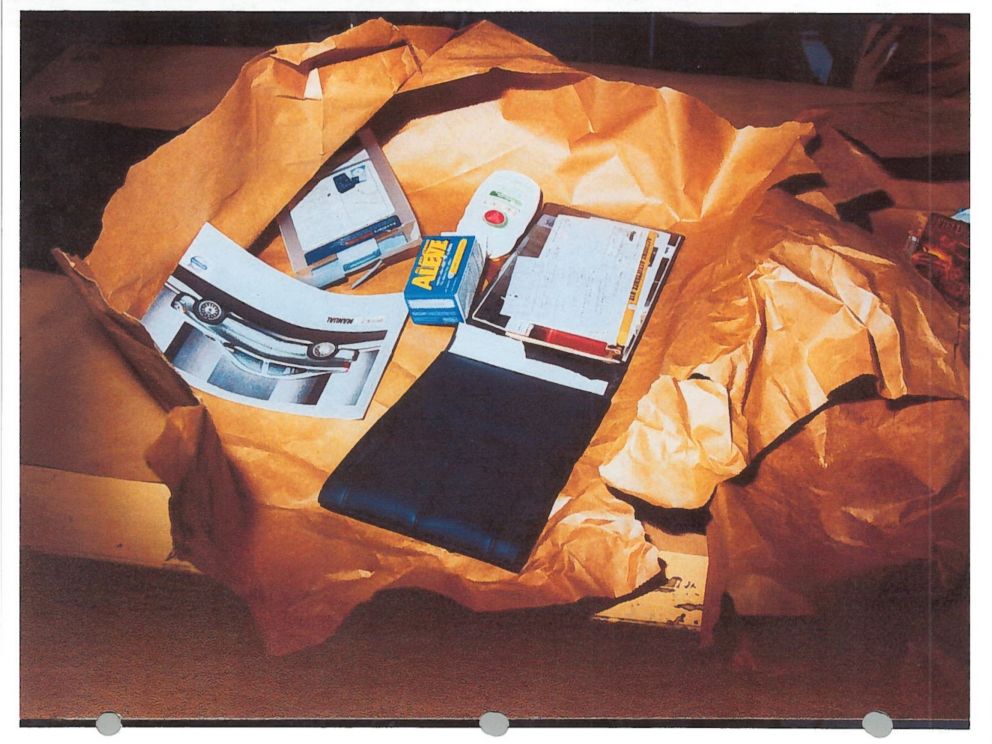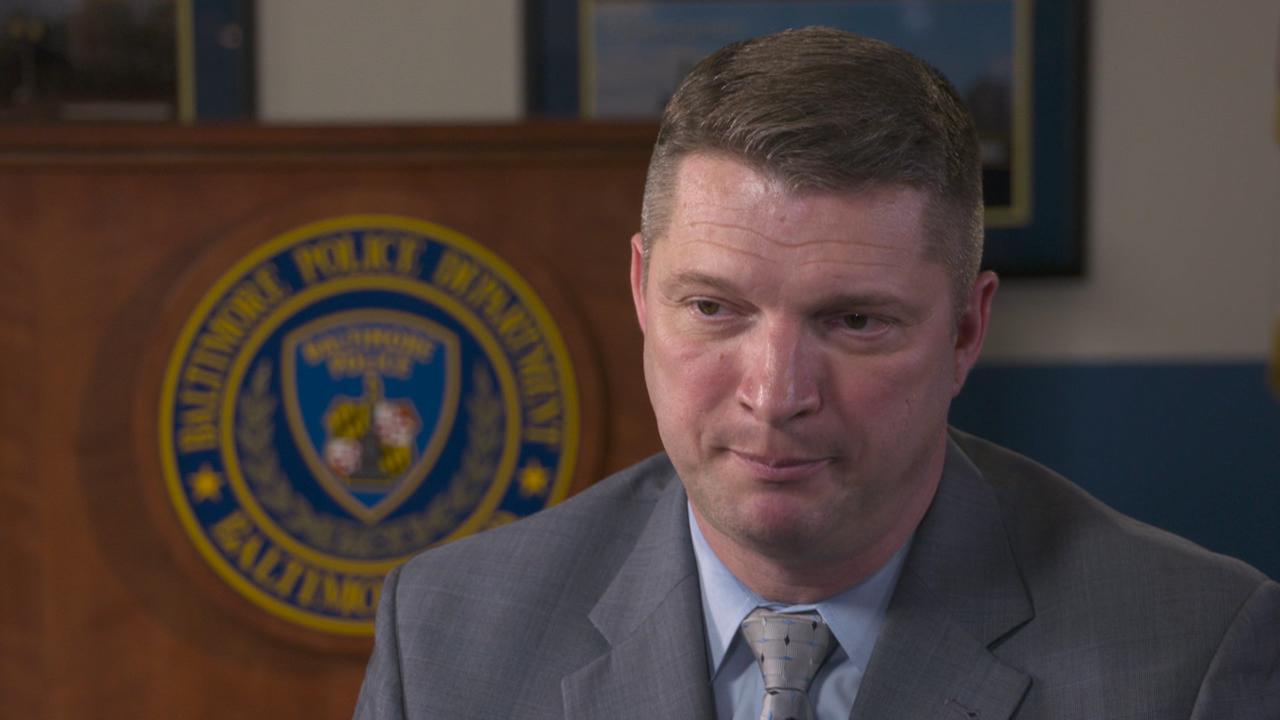The Mysterious Death of Annie McCann and Her Parents' Ongoing Fight to Prove Teen Was Murdered
The teen's parents have been fighting for years to prove she was murdered.
— -- It was barely 6 a.m. on Halloween morning in 2008 when Dan McCann knocked on his daughter Annie’s bedroom door to say goodbye to her before he left for work.
“It was dark. I could see her shape under the covers,” McCann told ABC News' “20/20.” “I said, ‘Bye Annie, I love you,’ shut the door.”
It would be the last time he saw his daughter alive.
Annie, a 16-year-old high school junior, was a passionate artist. Her work decorates the family’s Alexandra, Virginia, home. Growing up in a devout Catholic family, Annie liked drawing crosses, but her obsession was capturing her cherished dog, Breezy Max.
She was a good student who played basketball and made her mother Mary Jane laugh.
“Annie was funny, quirky, witty,” Mary Jane McCann said.

Her parents say Annie acted young for her age. She was sheltered and a homebody, with a small circle of friends. Annie had just gotten her driver’s license and her parents let her use the family’s white Volvo, which she drove to and from school.
In 2008, Snapchat and Instagram didn’t exist yet, and the McCanns said they heavily monitored their daughter’s internet use.
“She could barely work a flip phone,” Dan McCann said. “She just got her Facebook account.”
On Oct. 31, 2008, Dan McCann left to go to his managerial job with the TSA in Washington, D.C., while Mary Jane, a former White House I.T. worker and now stay-at-home mom, was on her way to upstate New York to visit the couple’s son Sam at college.
For Mary Jane, the first sign that Annie was in trouble was when she didn’t hear from daughter that afternoon.
“She always called me like clockwork after school,” Mary Jane said. “I got this gut -- something’s not right and so I called a neighbor ... and I said, ‘Are there any signs of Annie? No. Any signs of the car? No.’”
After Mary Jane hung up with the neighbor, she called Dan, who rushed home and found their home phone ringing.
“I answer it. It’s an automated message from the Fairfax County public school system saying that your son or daughter was absent today, the whole day, I almost collapsed,” he said.
Dan McCann had already called the police, but the McCanns said the officer who arrived didn’t seemed overly concerned, thinking maybe it was just Annie acting out. A note was found on her bed that said, in part, “This morning I was going to kill myself, but I realized I can start over instead ... if you really love me, you’ll let me go.”
“'I’ll be careful,' that’s how the note ended, ‘I’ll be careful,’” Dan McCann said.
Mary Jane and her son Sam drove the six hours straight back home from New York that night and waited with her husband for word.
“People were saying, ‘Don’t worry, she just ran away, she’ll be back, kids do this all the time, it’s not uncommon, don’t worry about it,’” Mary Jane McCann said.
Then, on Nov. 2, 2008, not even 48 hours later, homicide detective Sgt. Sean Jones with the Baltimore, Maryland, police department, responded to a call at the Perkins Homes housing project -- about 50 miles away from the McCann’s home. A man taking out the trash had discovered the body of a white female teenager behind one of the industrial dumpsters on site.
Jones, a 25-year veteran Baltimore police officer, said his first thought was it was a homicide.
“And we treated it as such,” he said.
The discovery of Annie McCann’s body would launch an ongoing battle, with the McCann family believing the Baltimore police rushed to determine their daughter’s death as a suicide in order to close the case instead of concluding it was a homicide. The Baltimore police stand firmly behind their findings.

The Shocking Autopsy Results
On scene, Sgt. Jones said there was no apparent cause of death and no apparent signs of trauma to the body. While searching the area, he quickly found a backpack nearby.
“I find a hall pass for the Fairfax County High Schools, I find her driver’s license,” Jones said. “I have people back at the office call the Fairfax PD.”
A half hour later, the identity of the teen was confirmed as Annie McCann.
Sgt. Jones drove to Alexandria to break the news to her parents in person. The McCanns collapsed into grief.
“We howled, the three of us, Sam, Mary Jane and me,” Dan McCann said.
In addition to the note left in her room, the McCanns later discovered Annie had taken $1,000 in cash, all of her favorite clothes and a box of Cheerios. Nothing in the note hinted at where she was going. Mary Jane said the family had no connection to Baltimore.
Police found Annie’s Volvo abandoned at a nearby gas station. Inside the car, they found a tiny clue -- a fingerprint that matched someone already in the police database.
Baltimore police said the print belonged to a teenage boy, who when questioned by police said he and his friends came across the car in the projects and found Annie face down in the backseat but claimed she was already dead. Sgt. Jones said the boy said they dumped Annie’s body behind the dumpster and went joyriding in the Volvo. One of the boys allegedly involved, police said, was Darnell Kinlaw, who would turn up in another case later.
When the autopsy was completed, the results were shocking. The report didn’t note any significant trauma, but said Annie was found with a small amount of alcohol and a large amount of Lidocaine, a common numbing agent found in all kinds of over-the-counter products, including Bactine, an antiseptic Annie had been using to treat her recently pierced ears.
“We found near the car a Bactine bottle that had the lid removed,” Jones said.
And on the lip of the bottle they found Annie’s DNA. It was an unexpected place to find it, Jones said, stressing, “The lip of the bottle would have been covered by the spray pump ... it has to be forcibly removed.”
The Baltimore medical examiner who conducted Annie’s autopsy determined the cause of death to be lidocaine poisoning but said the manner of death, how it got into her system, was “undetermined.” After seeing the autopsy results, the police say they determined it was a suicide.
“I don’t have any other evidence to point me in any other direction,” Jones said.
But the McCanns refused to accept that their daughter had taken her own life, questioning that if Annie wanted to kill herself, why did she go all the way to Baltimore and why didn’t police find her fingerprints, only DNA traces, on the Bactine bottle.
One week after their daughter’s body had been found, the McCann’s brought Annie’s body home and buried her in an Alexandria cemetery. In a curious and cruel blunder, the Baltimore medical examiner’s office failed to restore Annie’s heart and brain to her body after the autopsy. They began to wonder if the medical examiner could lose her organs, was there something else that was botched?
The McCanns Launch Their Own Investigation
Diane Downey, who has spent 25 years preparing bodies for burial at the Alexandria funeral home where the McCanns brought Annie, told “20/20” she was unnerved after receiving Annie’s body.
“There was absolutely no way this was a suicide with all the trauma to her body,” Downey said.
Downey and the McCanns both had noticed a goose egg-like bruise on Annie’s forehead.
“I was questioning the goose egg on her forehead in the coffin,” Downey said. “I kept going back to the detectives but they kept dismissing it as, ‘no, they were minor abrasions.’”
Downey also pointed out to them that Annie’s fingers appeared wilted.
“Her fingers were shriveled up like they were raisins, like she had been, her body had been soaked for several hours,” she said.
The McCanns’ heartbreak and bewilderment only grew after they received their daughter’s autopsy photos much later. They are convinced there were a cigarette burn on her forehead and a mysterious letter “J” on her ankle. Worst of all, they believed they saw signs of sexual abuse.
“I was horrified,” Mary Jane McCann said. “It was like, ‘Oh my God, my daughter was tortured.’”

The McCanns decided to launch their own investigation, using their savings and even Annie’s college fund to buy billboards around town hoping to get the truth about Annie. They enlisted famed medical examiner, Dr. Michael Baden, and hired private investigators to look into Annie’s case.
After reviewing the case materials, Baden said, he was immediately struck by the fact that Annie’s body was found by a dumpster.
“People usually don’t commit suicide by overdose by a dumpster,” he said.
In his 50 years of death investigations, Baden said he had never heard of anyone killing themselves by drinking Bactine and said, in his opinion, there wouldn’t be enough Lidocaine in one bottle to kill her.
“I went, ‘Holy cow, she was murdered,’” Dan McCann said.
The McCanns also contacted Dr. Keith Ablow, a celebrity psychiatrist, who read through the records and wrote to the McCanns, “It would not be correct to label this a suicide.”
Disappointed and desperate, the McCanns took their fight to Capitol Hill to Sen. Charles Grassley, R-Iowa, one of the country’s most powerful senators and chairman of the Senate Judiciary Committee. Grassley sent off letters to the Baltimore police, the FBI and the Bayer Corporation, which makes Bactine.
In their responses, the Baltimore police and the FBI stood by their investigation and the conclusion that “Annie most likely died from self-ingestion of Bactine.”
However, Bayer claimed it previously had told the Baltimore police that the company did “not expect that the amount of Lidocaine in a single five-ounce bottle of Bactine would cause death.”
A Possible New Witness and a New Suspect Leads to Dead Ends
Three months after Annie’s death, Jim Kontsis, the private investigator hired by the McCanns, who had been poking around and showing Annie’s photo to people on the streets of Baltimore, found a clerk and a waitress at Vaccaro’s pastry shop in Baltimore’s Little Italy neighborhood who said they recognized the teen. The waitress said she remembered Annie eating cannoli and drinking a cappuccino with extra whipped cream – and that she hadn’t been alone.
“She was with another girl, and then that’s when the description came out,” Kontsis said.
A former police sketch artist, also hired by the McCanns, drew a picture of the other girl, based on the waitress’s description. The girl in the drawing had dark hair and was older than Annie, late teens or early 20s, and looking disheveled.
“[The waitress said] she had heavy, heavy make-up, she had the ugliest nail polish you would ever see, it’s puke yellow,” Kontsis said. “Puke yellow, that’s what she said. She said, ‘I’ll never forget the fingernail polish because it was so hard looking.’”
Kontsis believed if he could find Annie’s mystery friend, he could break the case wide open. The McCanns publicized the sketch, hoping someone would recognize the young woman. There were several leads, but they have never been able to track the woman down.
Sgt. Sean Jones with the Baltimore police said the police had investigated the lead, but ultimately they weren’t impressed with Kontsis’s findings.
“It ultimately does not have anything to do with Annie’s death,” Jones said. “It’s important, but ultimately we weren’t able to verify that it ever happened.”

But then, three years after Annie’s death, another murder in Baltimore drew what the McCanns say were eerie parallels to her case.
A 26-year-old woman named Lakeisha Player was found dead, her car stolen. The suspect police named was Darnell Kinlaw, the same young man who had been connected to taking Annie’s car for a joyride.
But despite the seeming similarities between the two cases, Jones argued they were different circumstances.
“[Kinlaw] shot her [Player] and stole her car in a domestic incident, has no similarities to Annie’s case,” he said. “I think it tells … that if he were to murder someone, he’s going to use a gun, he’s going to use a standard method, and that he’s not going to poison someone with Lidocaine.”
For years, the McCanns wanted to question Kinlaw themselves, convinced they might be able to get more information from him about Annie. Nearly eight years after Annie was found dead, they got their chance.
The McCanns had attended Kinlaw’s court appearances and became close with Player’s grieving family. Then finally, Kinlaw agreed to meet with them. This past June, the McCanns drove from Alexandria to the North Branch Correctional Institution, a maximum security prison in Cumberland, Maryland, where Kinlaw is serving 30 years for murdering Player.
“We don’t believe he murdered Annie,” Dan McCann said. “We want to know the circumstances under which he found the car, found Annie, had he seen her before, had he seen her with anybody else.”
The McCanns met with Kinlaw, who said they said seemed genuinely upset at times, but told them he knew nothing about how Annie died.
“We’re worked a long time to get to see Darnell Kinlaw, finally got to, and we got pretty much what we expected, which is nothing,” Dan McCann said. “Didn’t have anything to do with moving her body, didn’t touch the car.”
The McCanns have continued to publicly and repeatedly slam the Baltimore police department over their daughter’s death.
The Baltimore police, including Col. Stanley Branford, chief of the Criminal Investigation Division, continue to stand by their conclusion that Annie McCann committed suicide by drinking Bactine. They cite several notes Annie wrote, including the letter she left on her bed and two other notes found with her personal effects near her car.
“In all of her writing, she had indicated that she was leaving and she expressed to some degree that she was tired of living,” Branford said. “My heart goes out to her parents, and we want to provide them with the best answers we can during this investigation.”
Branford says it is absolutely not true that the police department just wants to move on from the case, and that the department will continue to investigate when there is new information.
“We have been investigating this case since 2008,” he said. “We have responded to every request that they made. We responded to every piece of information that came in.”
More Theories as to What Happened to Annie McCann
“20/20” consulted with Dr. Bill Manion, a board-certified forensic pathologist independent of the McCann investigation. Manion estimates he has determined the cause and manner of death in approximately 2,500 cases and said not one of them involved Bactine or Lidocaine.
Manion believes a five-ounce bottle of Bactine, like the one Annie had, does contain a potentially fatal dose of lidocaine, despite statements from Bactine’s manufacturer, Bayer, and Dr. Michael Baden, who reviewed the autopsy results for the McCanns, saying otherwise.
“To be honest, I didn’t know it [Bactine] was capable of killing you, but it is capable because it has lidocaine in it and lidocaine is a toxic drug,” Manion said. “There is enough in a bottle of Bactine to kill someone. Even in a half bottle, there are roughly two grams, and that would be enough to cause death.”
Even so, when he examined Annie’s autopsy report, Manion pointed out certain things. Like the McCanns, he believes a second large bruise on the side of her head is significant.
“In Annie’s case, the most significant injury was this large bruise on the left side of her head,” he said. “This indicates the person was either punched or had some type of object hit against their head, or perhaps fell and struck their head.”
Manion said it’s possible, judging from the autopsy result, that Annie could have been assaulted or someone could have put Bactine into her alcohol.
“Here she is two days out and she’s lost all her money and she’s going to have to go back home,” Manion said. “You can’t always predict a suicide.”
Both Manion and Baden raised another possible scenario – that maybe Annie was suffocated.
“You won’t see much trauma to the face itself, particularly if the person is under the influence of alcohol or drugs and already unconscious,” Manion said.
Manion also agreed with Alexandria funeral director Diane Downey that Annie’s wrinkled fingers could be a clue.
“Normally, the only time we see this is in a drowning, where the person has been submerged underwater for some time,” he said. “So I can pose a scenario where she was drowned face down in a bathtub and has a bump on her forehead from being forced down.”
But Baden, on the other hand, dismissed that idea, saying he didn’t believe after looking at the autopsy photos that her fingers looked wrinkly. He also does not believe he saw any evidence to support Annie having been sexually assaulted. He also does not believe the other mark on her forehead was a cigarette burn. As for the mysterious “J” found on Annie’s ankle, Baden said that could have just been an accidental pattern from blood settling.
Manion disagreed, and said the “J” looked “very distinct” to him.
“It looks to me like it was placed here,” he said. “This raises real questions as why was this young girl branded? So then that takes us away from the suicide and more to the homicide aspect.”
The Baltimore police are critical of some of the professionals the McCanns have consulted.
“The part that angers me even more is they’re being misled,” Sgt. Jones said. “Those comments to them, particularly from the funeral director, particularly from Dr. Baden, are irresponsible.”
“I understand their frustration,” he continued. “I understand that there are questions that aren’t answered, and I apologize for that, however, it’s not going to change the outcome of the findings.”

Still Fighting for Annie
While the Baltimore police maintain Annie's case remains open and they will investigate if new information comes to light, the McCanns are still fighting for answers about their daughter. When the McCanns got Annie’s white Volvo back, they didn’t know what to do with it.
“I wanted it—actually wanted to crush the car… like take it to a junkyard,” Mary Jane McCann said. “We knew that we wouldn’t sell the car because who would we sell it to? I wouldn’t anyone to have that because to me, Annie’s precious body was in that car.”
In the end, they said they gave the car to Lakeisha Player’s aunt, Wanda Player.
To the McCanns, their daughter’s death remains a mystery, one they know might never be solved. But after butting heads with authorities all these years, they say it might be enough if Annie’s death was re-classified as an unsolved homicide.
“We want justice for Annie,” Mary Jane McCann said. “Her death is considered to be undetermined and lidocaine poisoning. Her death needs to be changed to homicide… as bitter as we are [at the Baltimore police], we sometimes have to remind ourselves none of them actually killed Annie.”
“But Lord knows… they failed her,” Dan McCann added. “Annie deserved better.”